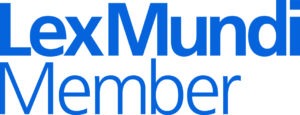In Thailand, the requirements for trademark registration are specified in Section 7 of the Trademark Act. One requirement, subject to certain exceptions, stipulates that marks must possess the element of “distinctiveness,” in that they must be distinguishable from the marks of other parties in the eyes of the general public (this quality is also referred to as “inherent distinctiveness”). The second paragraph of this provision states the essential elements that constitute such distinctiveness.
The second paragraph of Section 7 does not, however, explicitly provide for any restrictions on the registration of marks that consist of individual Roman letters, Arabic numerals, mathematical symbols, scientific symbols, or abbreviations. This has led to uncertainty as to whether or not those elements are deemed distinctive.
In practice, the Department of Intellectual Property (DIP) either: (i) orders such elements in marks to be disclaimed; or (ii) rejects an application for a mark consisting of such elements entirely. This approach is justified on the basis that the elements are common terms, generic, or words having general meaning.
In view of this, many applicants will disclaim such elements in their marks ahead of time to allow for the registration process to continue unhindered. An applicant whose whole mark contains such generic content runs the risk of its mark being considered unregistrable by the DIP.
In such cases, some trademark owners have challenged the decision of the DIP by initiating legal proceedings with the Central Intellectual Property and International Trade Court (IP&IT Court). The following case studies provide insight into how the Thai courts assess trademark distinctiveness in such cases.

~H2O+
In 2001, H2O Plus L.P., a well-known U.S. manufacturer of cosmetics and other body-care products, filed applications for its house brand ~H2O+, among other things, for services in Class 35 that cover business management for retail stores.
The Registrar and the Board of Trademarks, under the authority of the DIP, considered the mark ~H2O+ to be nondistinctive based on the use and inclusion of common Roman letters, Arabic numerals, and mathematical symbols in the mark. The DIP deemed the mark to be unregistrable and ordered its rejection.
H2O Plus appealed the decisions reached by the Registrar and the Board of Trademarks to the IP&IT Court, contending that the mark was neither descriptive of the services (another requirement for word marks being that they must not directly refer to the character or quality of the goods or services) nor nondistinctive, as had been claimed by the DIP.
Upon consideration, the IP&IT Court found that the mark ~H2O+ referred to the chemical formula for water and did not make a direct reference to the character or quality of the retail services in Class 35. The Court, therefore, considered the DIP’s order to be unlawful and allowed the mark ~H2O+ to be registered for the services in Class 35. The Court’s judgment was affirmed by the Supreme Court in 2007, which provided that, given the services covered by the mark, ~H2O+ was an inherently distinctive mark, because the mark made no direct reference to the character or quality of the services.
4°C
A recent Supreme Court judgment, issued in 2014, mirrors the same principle followed by the IP&IT Court and Supreme Court in the H2O Plus case.
In 2005, ASTY Inc., a Japanese company, filed applications to register the mark 4°C for products in Classes 14, 18, and 25 in Thailand. The Registrar and the Board of Trademarks rejected the applications, considering the mark 4°C to be nondistinctive due to the use and inclusion of common mathematical symbols and the common abbreviations for degrees Celsius. ASTY Inc. appealed the decision to the IP&IT Court.
The IP&IT Court declared that fanciful marks, arbitrary marks, or suggestive marks are considered to possess the element of distinctiveness. The provisions of the Trademark Act do not stipulate that a generic word or a word having general meaning cannot be distinctive. The IP&IT Court therefore accepted the registration of the mark 4°C.
The DIP, as the defendant, appealed the IP&IT Court’s judgment to the Supreme Court. In 2014, the Supreme Court ruled that the plaintiff’s trademark 4°C was distinctive under Section 7 of the Trademark Act. The Supreme Court further elaborated that “a distinctive trademark” is one which enables the public or users to distinguish the goods with which the trademark is used from other goods.
The Supreme Court also held that the provisions of the Trademark Act do not stipulate that a generic word or a word having general meaning cannot be distinctive. Although the plaintiff’s trademark 4°C was composed of the number “4,” the symbol “°,” and the letter “C” as an abbreviation of degrees Celsius, the combination of which refer to the general meaning of “4 degrees Celsius,” the trademark had no direct reference to the character or quality of goods specified under the applications; for instance, metalware used on a dining table (International Class 14), briefcases (International Class 18), and bathing suits (International Class 25). Hence, the plaintiff’s trademark 4°C was inherently distinctive, and thus registrable.
Flexible View by the Courts
These two judgments evidence the fact that the courts have a broader, more flexible view in considering the distinctiveness of trademarks. Individual Roman letters, Arabic numerals, mathematical symbols, scientific symbols, abbreviations, or any combination of these elements may be accepted for registration and considered distinctive, as long as they do not directly reference the character or quality of the goods or services specified in the applications.




